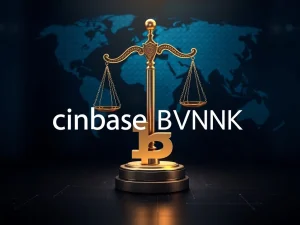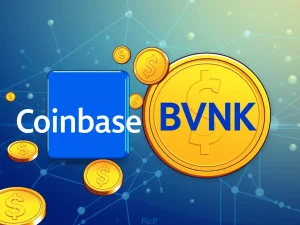Blockchain Interoperability: Solana Co-Founder Proposes Brilliant Fix for Fragmentation

Are you tired of the crypto world feeling fragmented? Navigating different blockchain networks can feel like moving between isolated islands. This lack of seamless communication, known as **Blockchain Interoperability**, is a major hurdle for developers and users alike. But what if there was a way to connect these islands?
What is Blockchain Interoperability and Why Does it Matter?
Imagine trying to send an email from Gmail to someone using a completely different, incompatible email system – it just wouldn’t work. That’s a bit like how many blockchains operate today. Each network, whether it’s **Solana**, **Ethereum**, or others, often exists in its own silo. Data, assets, and smart contracts struggle to move freely between them.
This fragmentation leads to several issues:
- Limited liquidity spread across different chains.
- Difficulty building truly decentralized applications (dApps) that leverage the strengths of multiple networks.
- Increased complexity and cost for users who need to bridge assets or interact with services on different chains.
- A less unified and efficient Web3 ecosystem overall.
Improving **Blockchain Interoperability** is seen as key to unlocking the next phase of Web3 growth, making the technology more accessible and powerful.
Anatoly Yakovenko’s Data Availability Layer Proposal
Anatoly Yakovenko, co-founder of Solana Labs, recently weighed in on this challenge with an interesting proposal. In a post on X, he suggested a novel approach involving a shared **Data Availability** layer. He envisioned a ‘meta blockchain’ that wouldn’t process transactions itself but would instead aggregate and order data streams from various leading layer-1 chains, including networks like **Ethereum**, Celestia, and of course, **Solana**.
Data Availability (DA) layers are crucial components in the blockchain scaling puzzle. They ensure that all the necessary data for transactions is published and accessible, allowing validators or other network participants to verify the state of the chain. Yakovenko’s idea is to create a shared, cross-chain DA layer. His key insight? This meta chain could potentially utilize the cheapest available DA offering at any given moment, making the entire system more cost-efficient.
Impact on Solana, Ethereum, and Other Chains
This kind of shared infrastructure could have significant implications for major networks. For **Solana**, it could mean easier interaction with the broader blockchain ecosystem. For **Ethereum**, which is already focused on enhancing its own DA capabilities through upgrades like Fusaka (expected late 2025) and proposals like EIP-7594, it presents an alternative or complementary approach. EIP-7594 specifically aims to increase Ethereum’s data capacity, potentially boosting its value accrual if layer-2 networks continue using it for DA.
However, a shared layer introduces complexities. Would chains like **Ethereum** or **Solana** rely on a third-party meta chain for critical data ordering? The proposal sparks conversations about how native chain development intersects with the growing need for universal **Cross-Chain Solutions**.
The Need for Better Cross-Chain Solutions
Yakovenko argues that making **Data Availability** cheap is fundamental because “Bandwidth is the irreducible bottleneck.” Lower DA costs directly translate to lower transaction fees for users, a major barrier to mass adoption. He even speculated about more advanced systems where this shared layer could use rule-based logic to merge transactions across chains, potentially eliminating the need for external sequencers and allowing users to initiate transactions from virtually anywhere.
Yakovenko isn’t alone in highlighting the need for greater cooperation in the industry. Cardano founder Charles Hoskinson has also spoken about the current “intrinsically adversarial” nature of crypto tokenomics. At Paris Blockchain Week 2025, he emphasized the need for “collaborative equilibrium” to better compete with traditional tech giants entering the space. Cardano’s work on Minotaur, a multi-resource consensus protocol aiming to pay unified block rewards across multiple networks, is another example of exploring collaborative **Cross-Chain Solutions**.
How Cheaper Data Availability Drives Innovation
The core technical challenge in scaling blockchains often comes down to how efficiently and cheaply data can be made available to everyone who needs it. By tackling the **Data Availability** problem at a cross-chain level, Yakovenko’s proposal suggests a path towards reducing costs across the board. Cheaper data means cheaper rollups, cheaper transactions, and ultimately, more room for innovation in decentralized applications and services that can operate fluidly across different networks, including **Solana** and **Ethereum**.
In conclusion, the vision of a meta chain aggregating data availability from networks like **Solana** and **Ethereum** is a compelling concept in the ongoing quest for better **Blockchain Interoperability**. While still a proposal, it highlights the industry’s focus on breaking down silos and building a more connected, efficient, and cost-effective Web3 future. Addressing the fundamental challenge of **Data Availability** at a cross-chain level could indeed be a brilliant step towards fixing the persistent problem of blockchain fragmentation.







